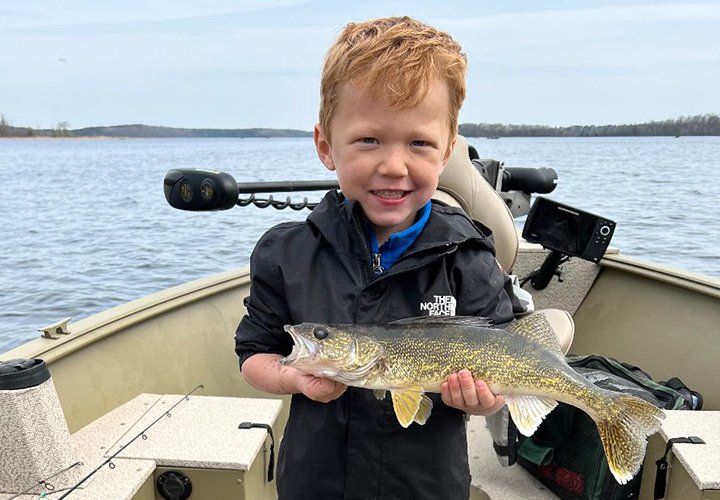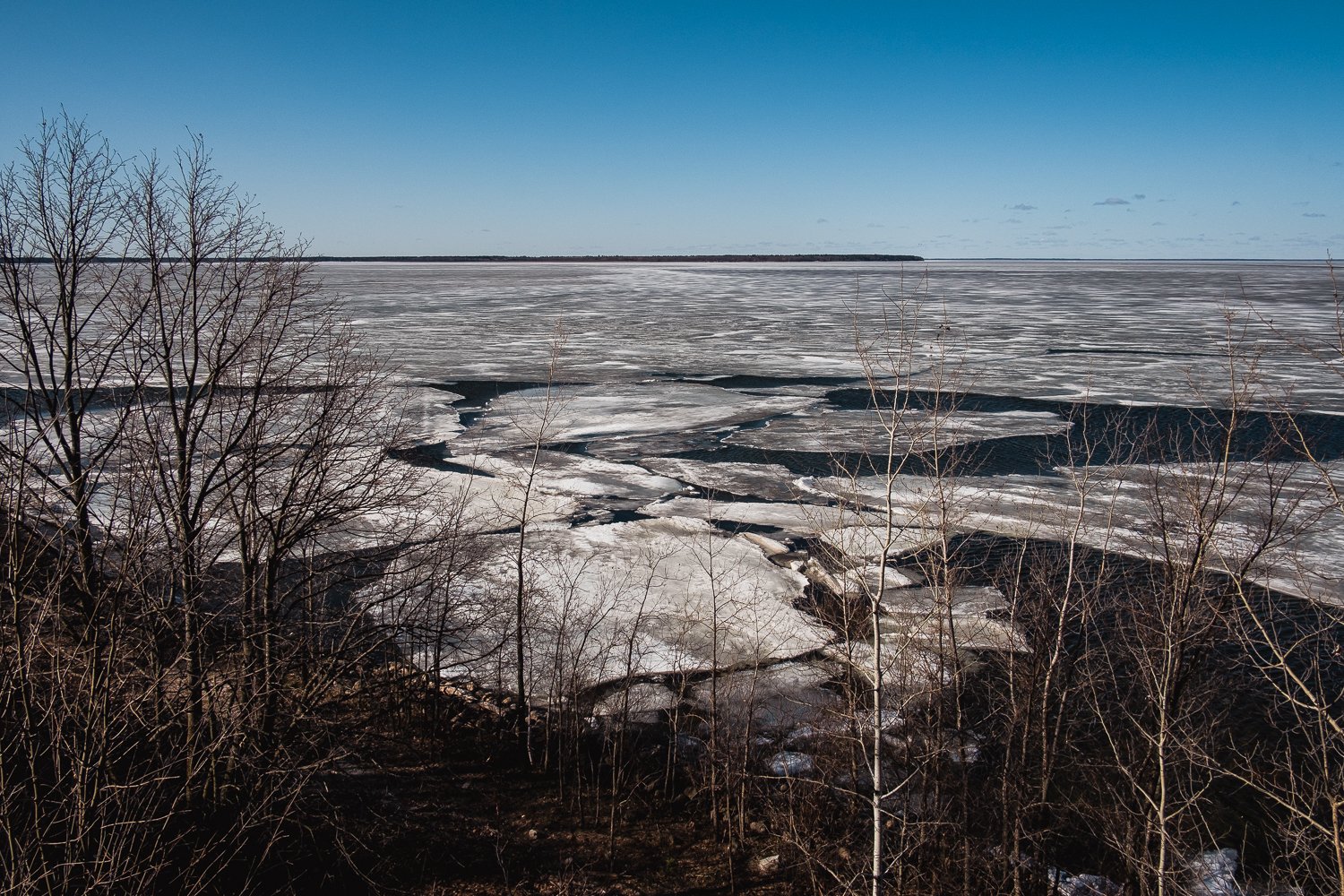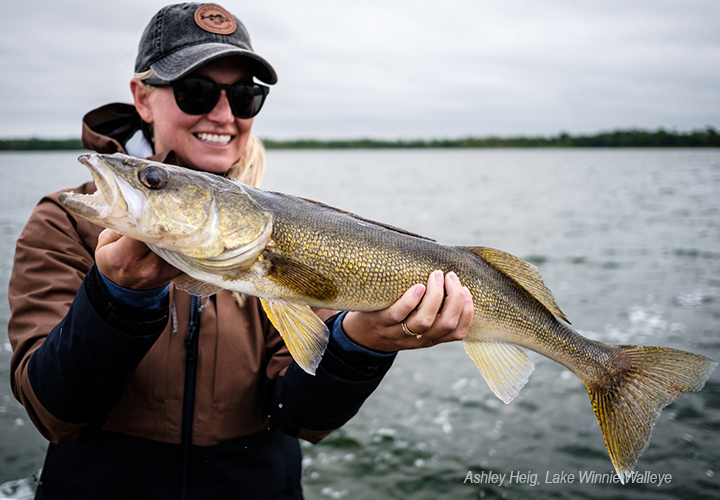The combination of stable, nearly perfect weather, active fish, and a traditional family holiday turned the Memorial Day weekend into a “Mega Fishing Event” on Lake Winnibigoshish. It’s fair to say that there were few if any disappointed anglers on the lake and a cheerful buzz about the great fishing was the norm around our resort.
Dick Williams with Lake Winnie Walleye May 31, 2023
Walleye locations around the lake were focused primarily on shoreline structure, but the earliest signs of migrations toward mid-lake structure were noted by some of our guests.
On Lake Winnie, shiner minnows typically begin spawning around Memorial Day, and that pattern was on track this week. So, we think that the shoreline bite will continue for a week or so, especially in areas adjacent to the sprawling sand flats where shiners perform their spawning cycle. Small perch and other baitfish move onto the same shallow flats where shiner minnows are spawning, and these add to the attraction for hungry walleyes.
Clear water conditions favor fishing during the twilight periods during morning and evening. Key walleye depths range from 12 to 18 feet along shoreline, shoreline related points and rocky structure also provide decent walleye action. During the daytime, especially on calm days, walleyes slip deeper down the breakline, preferring the 22-to-26-foot depth range. In the dark of night, they’ll move over shallow flats in the 10-to-14-foot range, maybe shallower at times.
Jig and minnow combinations continue to be the prominent presentation for our guests. Jig weights of 1/8 ounce are sufficient during twilight when walleyes move shallow. During the day, ¼ to 3/8-ounce weights are required to maintain contact with walleyes. Shiners are readily available now, and do appear to provide an advantage on Winnie, but larger fatheads or rainbows will get the job done too. Minnows in the 3-to-4-inch range, no matter which species, are the key.
Alternative presentations are beginning to produce results now too. Trolling spinners, Lindy Rigging with larger minnows and trolling crankbaits have produced fish this week. Experiment if you like, but keep the jigs and minnows ready, as a backup plan.
Walleye Location Lake Winnie May 31, 2023
While the water clarity on the big lake is still high, surface temperatures have risen into the 65-to-68-degree range. This, combined with lots of sunshine are promoting algae production. On Wednesday, while the underlying water remained clear, there was a thin film of plankton spreading horizontally across the surface of the lake. The “algae bloom” is important to anglers because it helps decrease clarity, making fishing daytime fishing easier. To the tiny walleyes that hatched recently, algae blooms represent an important element to survival, food!
Overnight Tuesday, into the wee hours of Wednesday morning, thunderstorms rattled the lake. Calm, sunny conditions on Wednesday produced a setback in terms of walleye action. Fish were caught, but at a lower pace and by a smaller group of anglers. Deeper structures, located near the shoreline were one key to “scrounging” decent catches of fish. See the fish on the Humminbird screen above? These tightly grouped schools of walleye are predominantly 2019-year class, 14-to-15-inch fish. When you see images like these on your graph, that’s what you should expect to catch. Anglers in search of larger fish should look for smaller groups of fish, or even singles and doubles appearing on the sonar.
Paul Kautza Showing Early Signs of Crappies Moving Shallow
Crappie fishing over the Memorial Weekend was slow, folks were looking for them, but few were caught. On Wednesday, singles began appearing in shallow water spawning territory. “They were not stacked up, but we saw early signs of movement”, one group of anglers reported. “We caught more rock bass than crappies, and a largemouth bass too, so we’d expect to see more crappies moving shallow over the next several days.” They added.
Perch fishing is good at times, not so good at others. They appear to be on the move, some anglers find a good school of keeper size fish one day, then lose track of them the next day. Perch populations are lower than average in Winnie right now. But when located, there are some nice size fish available, 11-to-12-inch perch can be expected, if you search for them.
Pike fishing hasn’t begun in earnest yet, but there are folks catching them as they fish for walleye. Apparently, the protected slot for northerns must be working because catching 23-to-25-inch fish is becoming common. It’s early in the season though, so let’s see how pike fishing progresses as the summer sets in.

























